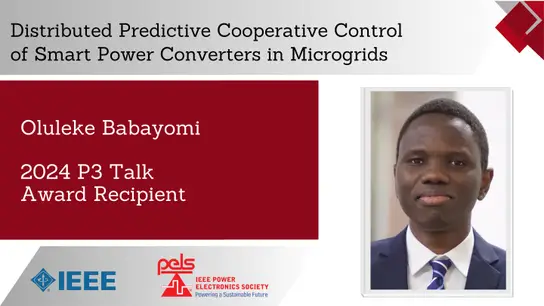-
Members: $25.00TEC
IEEE Members: $40.00
Non-members: $50.00Length: 1:36:00
07 Dec 2020
Abstract: Recent advancements of series-series (SS)-compensated wireless power transfer (WPT) technology have enabled its widespread applications in battery charging of portable devices, electric vehicles (EV), and medical implants. A conventional SS-compensated WPT system consists of an inverter at the transmitter side to maximize the overall system efficiency typically by phase control or frequency control, and a DC-DC converter at the receiver side to regulate the charging current and voltage of the battery load. However, the efficiency and dynamic response of the conventional WPT system is limited by the DC-DC converter in point-of-load applications. The concept of maximum energy efficiency tracking (MEET) sparked more related studies. Fast control strategies for MEET strategies are subsequently investigated, which normally require feedback signals from the receiver to the transmitter via a wireless communication system to calculate the coupling coefficient or correlated variables. The additional wireless communication system increases the volume and cost of the system. To this end, front-end monitoring strategies are proposed by monitoring the mutual coupling coefficient and load conditions of SS-compensated WPT systems without an extra wireless communication system. This tutorial will follow the roadmap of the front-end monitoring strategies that have been developed by the Wireless Power Research Group from the University of Hong Kong so far. Conclusions and future works will be drawn towards the end of the tutorial.
Primary Committee:
IEEE TEC


